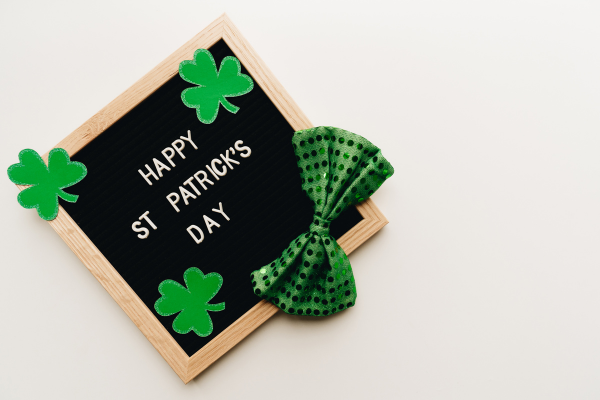“Thank You Helpings”: Practical Tips for the Table
 Featured Guest: Dianne Miller
Featured Guest: Dianne Miller
There are a lot of topics that we as moms talk about…. and some topics come up in conversation ALL. OF. THE. TIME. One of those topics is FOOD…..and the effort it takes to get our kids to eat a healthy and well balanced diet. We talk about it ALL. OF. THE. TIME, because we deal with it ALL. OF. THE. TIME.
The week of Thanksgiving is the perfect opportunity to teach our kids how to be thankful….with food!
Since this is a week full of food and family, we might as well gain some insight from someone who has already succeeded in this journey. Enter…my mom! Meet Dianne Miller.

Dianne raised four daughters, is “Nana” to seven grandchildren ages twelve and under and has worked with children as a volunteer and teacher. Together with my dad, Dianne has worked with youth, and mentored young adults and families for over forty years.
In other words, I thought it would great to share one of her tips from her 40 years of experience.
So today, I am bringing us all a TIP related to one of the most discussed topics among moms. Dianne considers this “one of the most successful TIPS for young parents she has mentored”. I call on her expert advice, because I have seen first-hand how her tips with food and thankfulness have succeeded. My mom used this tip on me, and I have used it with my children.
Topic: Food
A few familiar table phrases we as parents hear ALL. OF. THE. TIME.
“I don’t like that…!” OR “I don’t want to eat that…..”! OR “That looks yucky!!”. These phrases come with the parental territory, and if we remember correctly we have most likely said them ourselves.
One of the questions parents would ask my mom and dad is, “How do we overcome our children’s resistance to eat good food at the table?
TIP: “Thank You Helpings”
- A Thank You Helping is a small portion of a food that is being served at the table.
Typically, the term “Thank You Helping” is applied to a food the child may not like or refuse to eat. The child is encouraged and expected to take this small “Thank you Helping” and eat a few bites regardless of whether he/she “likes” it.
- At our dinner table growing up, as well as with my own children, it was and is expected that everyone takes a “Thank you Helping” of each type of food served.
- If a parent implements Thank You Helpings, the parent puts a very small portion of that food on the child’s plate and says “You must eat a Thank You Helping of this food in order to thank the person who prepared the meal. Once you eat your Thankful Helping, along with your dinner, then you may be finished and excused”.
- It is called a “Thank You Helping” to take the focus off the food and place it on the person who prepared the meal. This teaches the child to be thankful to the chef and his or her efforts even if the child does not like the food prepared.
Benefits of Implementing “Thank You Helpings”.
It’s a practical tip but creates an opportunity to teach children some fundamental life lessons.
- Teaches children to try new foods & broadens perspective to try new things.
- Children may like new foods once they have tried them.
- Lessens probability of the child being a picky eater.
- Eliminates the parent(s) being a short order cook.
- Teaches kids to look beyond their comfort zone.
- Teaches respect for others and to be aware when someone else takes the time to prepare a meal.
- Teaches manners – trains children how to be respectful at the dinner table AND at someone else’s table.
- Helps keep peace at the dinner table….this is a long term goal or benefit. It does not eliminate conflict altogether but sets a standard of healthy boundaries with respect and food.
- Teaches kids how to behave in social settings by practicing manners in your own home.
It can be embarrassing, and uncomfortable to be at someone else’s home when your child says, “I don’t like that”. It can also be difficult as a parent to then find something your child will eat.
But …….. always have grace – we have all been there!
Practical implementation
Before implementation:
- Communication as a couple.
- Make sure your partner is on the same page before presenting “Thank You Helpings” to your kids.
- This means the parents also take a “Thank You Helping” and become an example.
- Communicate with children – the more positive the better – you can even turn it into a game.
When seated as a family at the table explain that as a family we are going to do something fun and new. Explain a “Thank You Helping” is taking a small portion of each food, even if you don’t like it, as a thank you to the cook or the person who prepared the food.
- Everyone at the table receives a portion of each food served.
- Practice within reason. Allergies and food sensitivities will alter your approach.
- A portion may mean three beans, one Brussels sprout, or two carrots. Keep it small and simple just like our children. Do not overwhelm them.
- Explain how each child can try the food. Once they have eaten the small portion and are finished with their meal they can ask to be excused.
- Final step is thanking the cook.
Tips to Remember:
- We are all a work in progress.
- Do NOT get discouraged. You WILL get push back. Just like any other discipline consistency is key for setting expectations.
- Never judge a parent who does not practice this type of approach to food.
- Start “Thank You Helpings” at home first. It’s probably not going to work if you try it for the first time as a guest in someone else’s home.
- I (Sarah) don’t expect my kids to load everything on their plates during the Holiday’s when:
There is a large gathering of people
And food is served buffet style.
During the Holidays there is SO much food it is impossible to take a portion of EVERYTHING! I let my kids take their favorite foods, and make sure they have a well-balanced plate.
Truth: This is a process – not a one-time fix all problems.
Success & Feedback
Dianne:
“Over the years, I have had numerous parents tell us that establishing ‘Thank You Helpings’ at the dinner table has worked for their family. We have probably received more positive feedback on this topic than any others in all of our years of teaching and mentoring young couples.”
“Parents were surprised their child tried something new and liked it”
“There was one family who celebrated Thanksgiving with the grandparents. One of the children, who had been a picky eater said thank you to the chef, who was the mother-in-law/grandmother. The child then received the compliment from the grandmother reinforcing good manners. This exchange encouraged the child and the parents.”
“The parents were excited because their children tried a new food, which led to other children trying different foods.”
“One young couple implemented this tip with their family. The mother, who had been a picky eater, tried new dishes and found she really liked foods she had never tried.”
Gratitude
“Thank You Helpings” is about more than the food on their plates.
This is a life lesson. It’s not about the green pea or carrot. It is about helping children to look beyond themselves and to realize life is not all about them.
The word “Thank you” is more than just demonstrating good manners. It encourages us to show thankfulness, and to be grateful even in situations where we may not feel like it. Expecting our kids to say thank you can plant the seeds of gratefulness even in situations where the child does not feel like it. Down the road, showing others gratefulness can lead to a discipline of having a thankful attitude even during times where things do not go our way.
A thankful attitude towards others can help us achieve a grateful spirit. A grateful spirit can help us look at the positive even in times where we might be dealing with difficult circumstances.
May you have a Happy Thanksgiving
Guest Contributor:
Dianne Miller works in the Corporate Sales Office at American Airlines, served on the Coppell Independent School District Board of Trustees for thirteen years, and volunteered in the Coppell schools as PTA President. Dianne helped established the Coppell Mother’s Prayer & Babysitting Co-Op and has served on various church committees. Dianne and her husband, Bob, have been married 44 years. They served on staff at several churches in their early years of marriage, and then volunteered and taught Young Marrieds’ classes on marriage and parenting. Dianne enjoys fixing a big meal and offering hospitality to everyone.















